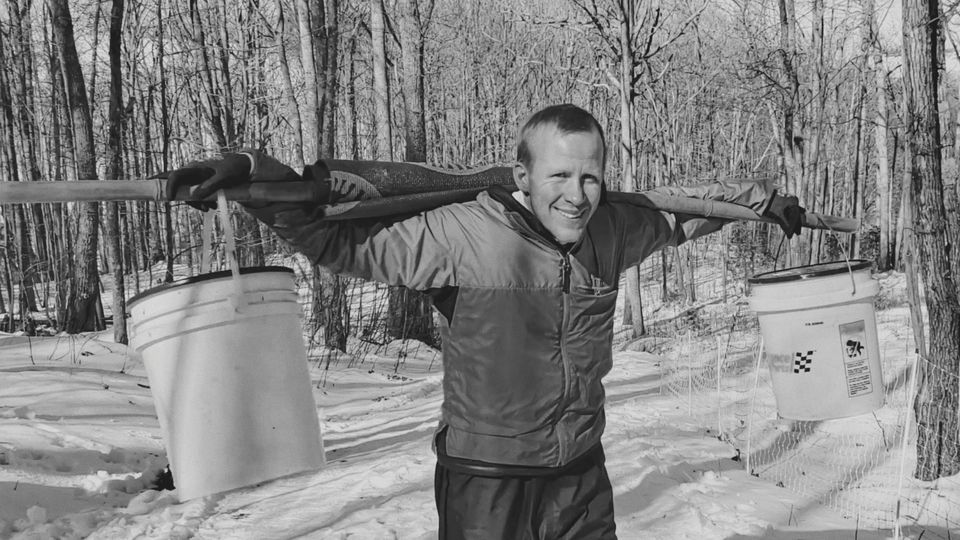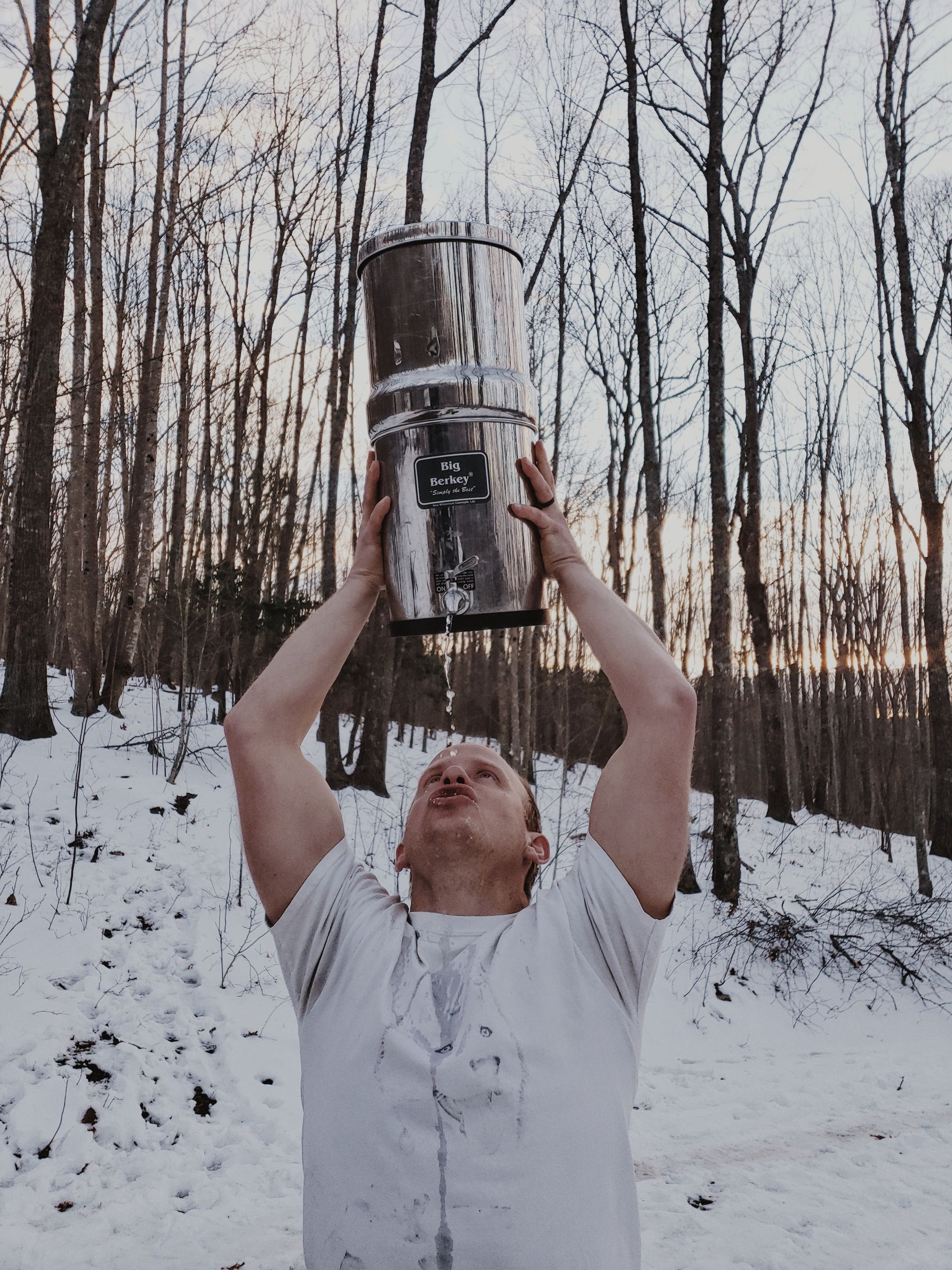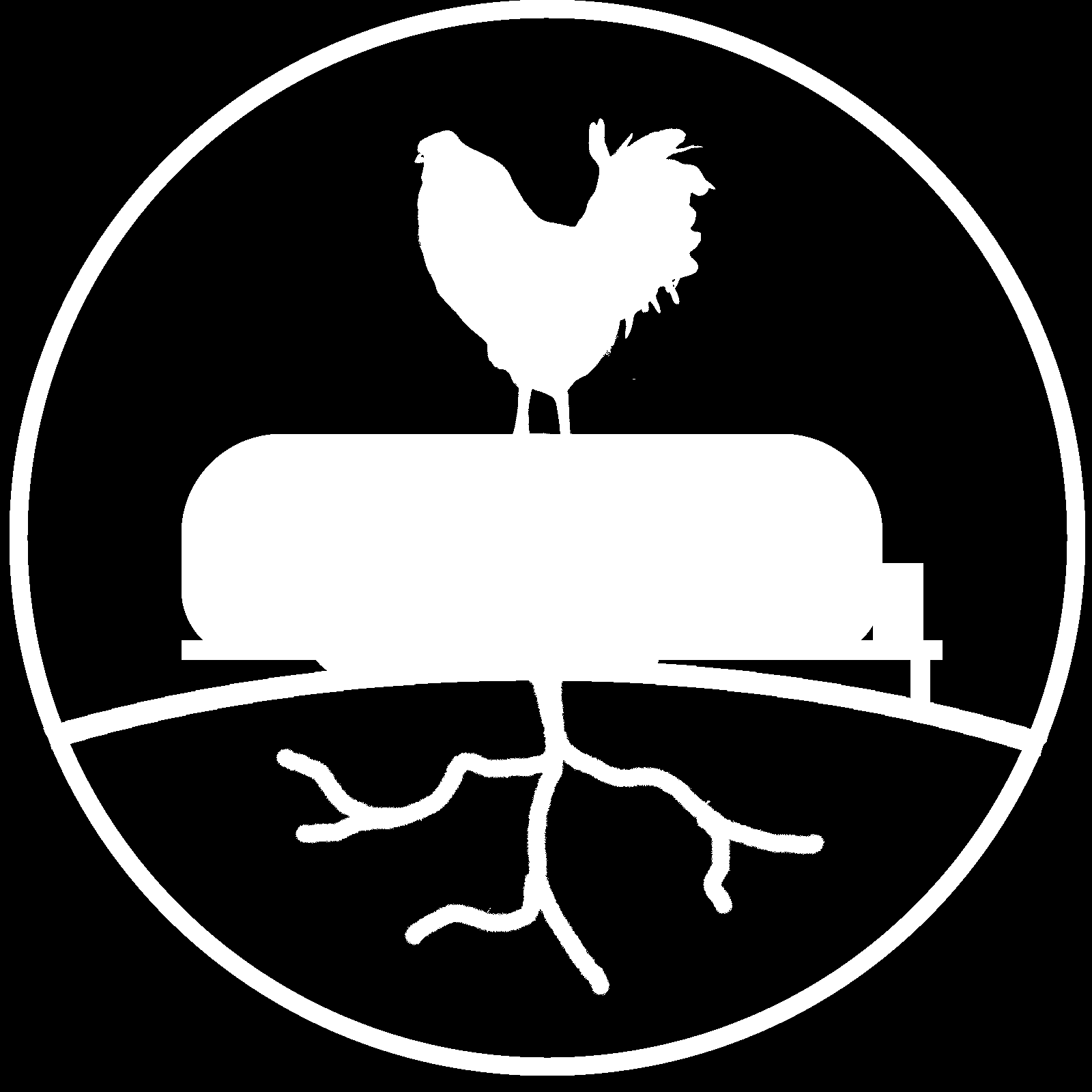Trial by Water

The other morning, Ashley was getting ready to make us coffee when she discovered water would not come out of our kitchen faucet. To her horror, the bathroom and shower were also waterless. There's no better alarm clock than your wife announcing the water pipes are frozen. We knew we'd have limited well functioning this winter. The previous owners designed the well for summer time use. What we did not expect was the need to worry about frozen pipes inside our trailer.
Airstreams, like ours, are said to be safe from pipes freezing so long as the internal temperature of the trailer stays above freezing. Go figure, ours froze up before our internal temps hit said freezing point. Fortunately, what could have been a complete disaster was prevented by our aggressive thawing procedures (upcoming video on YouTube). We worked quickly to get the pipes thawed with the help of our Mr. Buddy heaters. Almost out of the woods, we still had to get the outside sewer drain thawed. We boiled water on the wood stove, back primed water into the sewer hose, and closed the outermost drain valve to let heat melt the frozen tank valves. After 15 minutes, we tried it again. It worked!
This experience was a dead canary in the coal mine. Burst RV waterpipes would make for an incredibly difficult winter homestead life. So we've decided to heed the warning and winterize the Airstream. We will dry camp until we transition into a warmer season.
"Water isn't everything but it ranks up there with oxygen."
- North Dakota Norwegian Farmer
It is hard to imagine turning on the faucet and water not coming out. What do you have at or near home as a backup water source? Can you get water without electricity? How much water do you go through per day? How much water do your pets consume? Is your alternative water safe to drink? These are just a few questions worth pondering in this day in age while your pipes are unfrozen. Strange weather, strange geopolitics, strange everything is upon us. We will share with you how we manage to stay confidently afloat in troubled water.
Water Source
A top criteria in our homestead search over the past several years was to have fully decentralized direct access to fresh water. This meant we needed to be able to acquire and use water without third party involvement (middlemen, municipalities, pipes, pumps, wells, electrical machines, etc.). These amenities have plenty of merits but, to us, are all liabilities compared to a natural year-round private spring-fed creek. If these 3rd parties fail, as they sometimes do, we still need water. Our creek access allows us to continue to homestead at Strand Farm this winter.
Tip: Have a backup to your primary water source in case of an emergency. We can easily survive a week without food, but will die after a few days without water. Kidney failure due to dehydration is not uncommon to see in my ICU experience. How much water do you need?

Water Quantity
We are a small yet thirsty family at Strand Farm. Two adults, 1 dog, 2 cats, and 14 chickens. We've been fetching water from the creek for over a week (since we stopped using our well). Our current homestead requirement is 5-8 gallons per day. Keep in mind that we use a composting toilet (no water requirement), are taking sink baths, and have no trees or gardens that need active watering at this time. I've been carrying 10 gallons of water up from our creek about every other day. Weighing in at ~ 8 pounds per gallon, water is cumbersome to carry over any distance. We store our water in 5 gallon buckets, stock pots, and a water jug with spout.
Tip: Make sure you are able to get to and from your alternative water source safely and that you are strong enough to transport it. Figure out how much water your family needs per day. Be sure to keep at least a weeks worth readily accessible as a backup.
Water Quality
Access and Quantity are important, but safe drinking water is paramount. Here at Strand Farm we use a British Berkefeld water filter for cooking, drinking, and our pets excluding chickens. I bought mine in 2010 and have been an extremely proud owner ever since. These filters are used all over the globe for creating safe drinking water. In fact, when Ashley and I were traveling Indonesia, we found out our favorite coffee shop was brewing with Berkey water (go figure!). The capacity of our Berkey is 2.25 gallons. We've found it to be perfect for truck camping, RVing, and now homesteading for our small family. Water goes in the top chamber, runs through the filters and is ready to drink from the spigot in the bottom chamber. We fill the top as we take water from the bottom. The filters, used properly, are stated to safely filter 10,000 gallons before requiring replacement. Berkey filters are increasingly hard to come by and there are plenty of knock-offs available on the internet.
Counterfeit filters = unsafe drinking water.
My father-in-law recently bought his Berkey directly from the source. He told me they are increasing prices by 30% sometime in February 2022. (Inflation? Demand? Likely Both.) At the end of the day, the stainless steel dual-chamber Berkey container is nice but not mandatory. The ceramic filters are the most important part. I've seen these filters retrofitted to 5 gallon buckets and even, at Sineman Cafe in Ubud Indonesia, a large aquarium. Our Berkey filter is one of our best investments to date. I'll go in depth on our Berkey filter experience in a future article.
Water Break
Take time to develop a water plan for your household. At a minimum, have access to store-bought water. Gallon jugs are better and cheaper than water bottles since they have a handle and can be used as a transport vessel.
If you have questions about your water plan, please feel free to reach out to us through our contact page or simply reply to our email newsletter.

